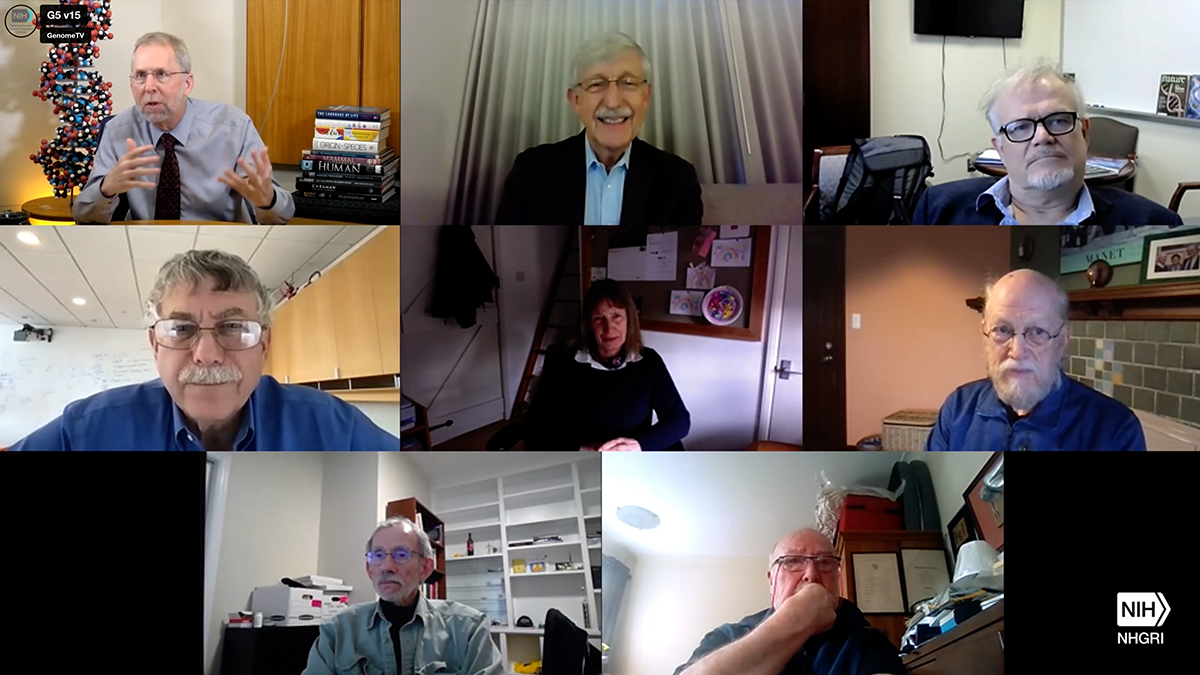Human Genome Project leaders release video of virtual reunion
NHGRI will reach another of its many celebrated ‘odometer moments’ this month! The 100th meeting of the National Advisory Council for Human Genome Research (NACHGR) will take place on September 18 and 19, 2023. Three times a year, NHGRI convenes NACHGR, a group of leading genomics experts who advise the institute about all aspects of the institute’s programs. With NHGRI now being more than 33 years old, it is not surprising that the centennial NACHGR meeting would be upon us! The open session of the NACHGR meeting will be videocast live on Monday, September 18. Please join via GenomeTV starting at 10:30 a.m. ET to hear updates about NHGRI and genomics.
The American Society of Human Genetics (ASHG) recently announced that after six years as Chief Executive Officer, Mona Miller will step down from that role on November 15 after the 2023 Annual ASHG Meeting. Mona joined ASHG in July 2017 and has led it through a period of substantial strategic growth and operational transformation, while navigating the unprecedented challenges of the COVID-19 pandemic. A search committee, chaired by ASHG President-elect Bruce Gelb, will work to help identify the next ASHG Chief Executive Officer.
Finally, last month, an international research group reported the generation of the first truly complete sequence of a human Y chromosome. While scientists completed ‘telomere-to-telomere’ sequences for the other 23 human chromosomes last year, more than 50% of the Y chromosome’s sequence remained unknown. With this newly available sequence, researchers are now finding previously unidentified genomic variants on the Y chromosome and, by studying these variants, will be better able to establish how the Y chromosome contributes to human health and disease.
All the best,
![]()
In This Issue
- Human Genome Project leaders release video of virtual reunion
- ClinGen precision medicine resource celebrates its 10th anniversary
- NHGRI funds educational hub to enhance diversity in genomic data science
- NHGRI releases resource exploring the use of population descriptors in genomics
- NHGRI hosts 2023 short course in genomics for science educators
Genomic Research Spotlight
Noncoding variants alter GATA2 expression in rhombomere 4 motor neurons and cause dominant hereditary congenital facial paresis
Tenney et al.
Nature Genetics. 2023 Jun;55, 1149–1163 PMC10335940
Hereditary congenital facial paresis type 1 (HCFP1) is rare disorder in which people have no or limited facial movements. People with this condition often have difficulty eating and communicating. Previously, researchers found that variants in chromosome 3 were associated with HCFP1 but could not pinpoint the disease-causing in the implicated genomic region. In this paper, researchers at NHGRI, Boston Children’s Hospital, and Icahn School of Medicine successfully found single nucleotide variants located in regulatory sequences, rather than protein-coding sequences, that are found in patients with HCFP1. These variants regulate the activity of a gene called GATA2, a gene known to be important for brain stem development. These findings demonstrate the importance of looking at the entire genome, not just the parts that code for protein, when searching for the cause of a highly heritable disease.
This research was supported by the NHGRI Intramural Research Program in the laboratory of Francis Collins, M.D., Ph.D., head of the Molecular Genetics Section.
About The Genomics Landscape
A monthly update from the NHGRI Director on activities and accomplishments from the institute and the field of genomics.
Last updated: September 7, 2023





